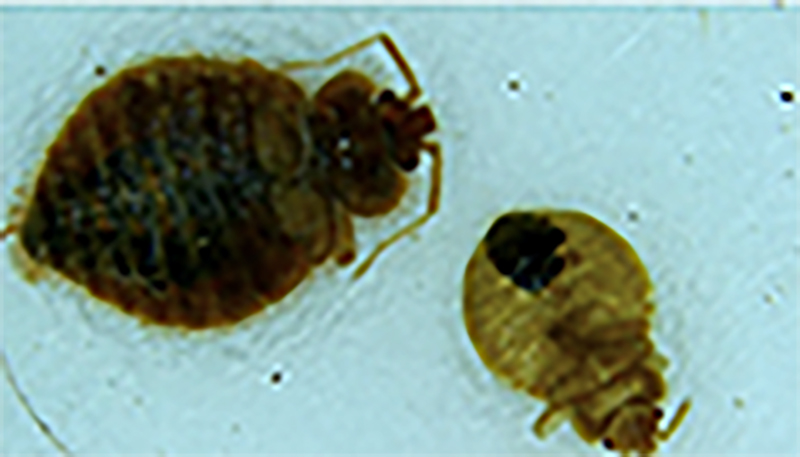
A county Extension Educator from northern Indiana recently submitted this photo, Figure 1, for identification verification. The bugs were reportedly biting people in their home. She was correct in diagnosing them as bat bugs (Cimex pilosellus) after a closer inspection even though others insisted they were common, everyday bed bugs (Cimex lectularius). Her accurate identification is likely to save a lot of frustration and considerable expense for the homeowner.
Prior to the late 1900s, most specimens of Cimicidae submitted to insect diagnostic laboratories were determined to be bat bugs. Then came the incredible resurgence of the common bed bug throughout the world, wherein the overwhelming majority of Cimicid bugs sent in for diagnosis were found to be bed bugs. By comparison, bat bugs have become quite rare - but they are still present and must be recognized because mistaking bat bugs for bed bugs will result in failed controls.
The most important difference between the two species is that bat bugs are primary parasites of bats – not humans. They live and develop in colonies of roosting bats where they feed exclusively on bat blood. In the absence of their hosts, bat bug populations cannot persist and reproduce; they need to have their primary host, bats.
Occasionally however, bats roost in attics, chimneys or behind walls of people's homes. When such bats either migrate or are eliminated from the building, any bat bugs remaining in the roosting site are forced to move to find food. When they relocate into human living areas they may incidentally bite people in much the same way that bed bugs do, but they cannot sustain themselves.
Differentiating between bat bugs and bed bugs is particularly important because control techniques are also drastically different. Controlling bat bugs first requires the elimination of any bats that are present in the home or the building. This is accomplished by exclusion techniques also known as "building them out"; sealing entrance points after the bats are out of the house so they cannot return. This is often work for trained animal control professionals. After the bats are excluded, and the remaining bat guano and residue is carefully cleaned up, efforts should be directed at preventing bugs residing in the roost area, from moving to other parts of the home where people live. Residual insecticides applied to all cracks and crevices near where the roost was located will help to intercept and kill them before they get to people. Light fixtures, chimneys, and window casing should all be treated. This treatment strategy is completely different than a strategy for treating bed bugs. What works for one definitely does not work for the other.

Identification
Compare the length of the hairs on the pronotum (area of the thorax closest to the head) of the specimens in the photo below. Bat bug (left) hairs are at least as long as the width of the bat bug's eye and twice the length of the bed bug (right hairs). The following comparative illustration is most effective, Figure 2